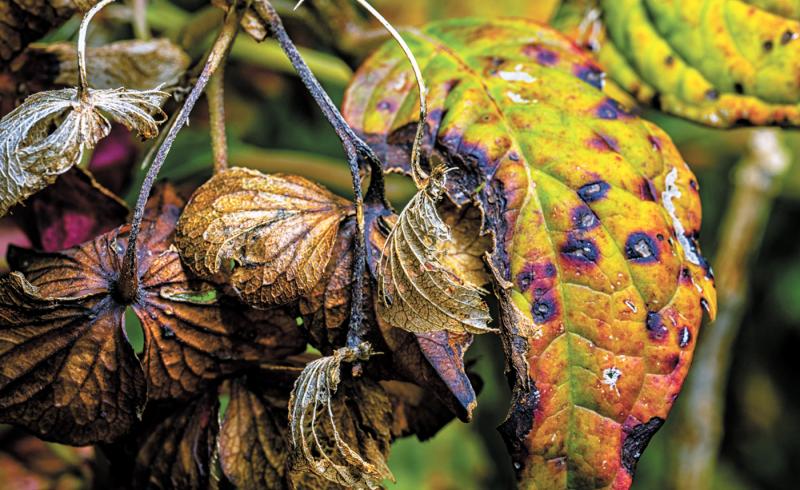October leaves can benefit the garden
It's October, the eighth month in the Roman calendar. Octo means eight in Latin. October is when many tree leaves change color. This happens when chlorophyll, which trees use to turn sunlight into sugar, begins to break down as the days get shorter. Chlorophyll gives leaves their green color during spring and summer. There are other pigments in leaves called carotenoids, which produce yellow, orange and brown. Carotenoids are always present in leaves all season, but the green chlorophyll hides them. The brilliant red-colored leaves come from the pigment anthocyanin.
October is also the time to pick the last warm-season vegetables before the frost hits. Harvest all of your tomatoes, even the green ones, along with any peppers.
Back to leaves – they are a great resource for your garden and flowerbeds, even potted plants. You can put leaves directly into the garden or compost them. Leaves break down and add organic matter along with nutrients to the soil. As they decompose, they act as a mulch, keeping weeds down and holding in soil moisture. Also, leaves will help insulate the ground during the winter, protecting perennials from severe cold temperatures.
Usually, you do not need to remove leaves from your perennial beds, or from under shrubs and in other mulched areas. Even deep layers of leaves will break down over the winter, giving you a nice inch or two of mulch next spring.
That said, it is a good idea to keep the crowns of perennial plants from being totally buried under leaves. Do not pile leaves on top of evergreen perennials, such as creeping phlox (Phlox subulata) and Lenten rose (Helleborus), and keep leaf piles away from the base of trees and shrubs.
You can add leaves to your compost pile. Composted leaves improve the structure of the soil and add fertility to the garden. You can compost leaves whole or shred them by running over them with a lawnmower. Shredded leaves will break down into compost faster.
Even if you don't have a compost pile, you can pile leaves in a back corner of the garden to produce leaf mold. This is partially decomposed leaves that can be used like mulch in your garden. A pile of leaves about 3 feet tall and wide will break down into leaf mold within one to two years. Again, shredding the leaves lets them break down more quickly.
If you have a mulching lawn mower, you can simply run over the lawn and mulch the leaves right into the grass. The shredded leaves will break down over the winter, giving your soil nutrients and holding down any weeds. If you mow your lawn once a week until the leaves have finished falling, you probably won't have to rake a single leaf, and your lawn will look better next year.
Never burn your leaves, as this destroys many of the beneficial nutrients in them. It also releases irritants and particulate matter into the air, which is extremely unhealthy.
It is actually illegal in many areas to burn leaves. Also, burning leaves can be dangerous, sometimes causing wildfires.
Enjoy the fall foliage, and use your fallen leaves in the garden or mulch them right into the lawn.




















































